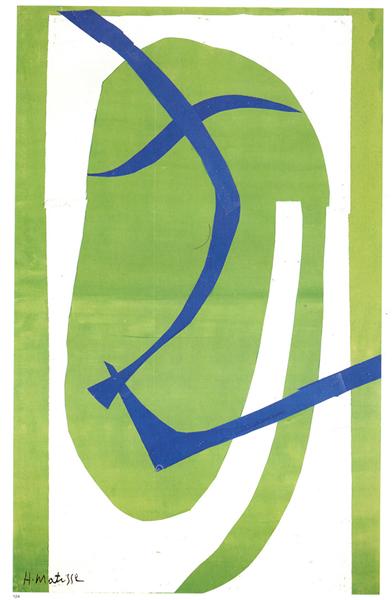Description
Henri Matisse, one of the most eminent representatives of Fauvism, continued to dazzle the world with his innovative use of color and form, even in the works of his later period. "Japanese Mask" (1950) is a clear example of his mastery and deep understanding of the aesthetics and simplicity that characterize his work. In this specific piece, Matisse clearly fuses a series of influences ranging from Oriental art to his own personal evolution towards more abstract forms and more direct colors.
The work "Japanese Mask" initially stands out for its compositional simplicity and the strong visual impact of its colors. We observe a central figure, a Japanese mask, framed by areas of flat color that perfectly harmonize with the Fauvist aesthetics that Matisse was a perfect exponent of. The mask, without excessive detail, seems to float on a background that stands out due to the juxtaposition of solid colors. The combination of reds, blues, and whites establishes a contrast that invites the viewer to examine every corner of the composition without feeling overwhelmed by superfluous details.
The use of primary colors in all their purity is a technique that Matisse perfected throughout his career. In "Japanese Mask," the deep blue of the background almost appears three-dimensional, providing a sense of depth that elegantly contrasts with the two-dimensionality of the central mask. This play of planes and colors is a hallmark of Matisse's style, in which the simplification of forms never compromises the visual richness of the work.
Japan and its artistic expression were always of great interest to Matisse, and this is reflected in the choice of the mask as the central motif. Japanese masks, with their simple yet expressive forms, fit perfectly into Matisse's quest for the pure essence of human expression. This theme not only adds an air of exoticism to the work but also serves as a bridge between cultures, showing how Oriental influences are integrated and reinterpreted in the context of Western art.
The technique of cut-outs, or "gouaches découpés," which Matisse extensively used during his later years, also seems to influence "Japanese Mask." Although in this work he does not directly use this technique, the appearance of cut and pasted shapes is unmistakable. It is possible to see in this painting a prefiguration of that technique, combining traditional painting with a collage-like appearance that adds a tactile dimension to the work.
"Japanese Mask" reflects not only the influence of Japanese art but also the artistic maturity of Matisse, who at 80 years old was still exploring new forms of expression through color and form. It is a work that, although seemingly simple, encapsulates a wealth of influence and technique that only an artist of Matisse's caliber could achieve. Ultimately, this painting is not only a piece of aesthetic admiration but a testament to Matisse's ongoing artistic journey towards new forms of representation and meaning.

